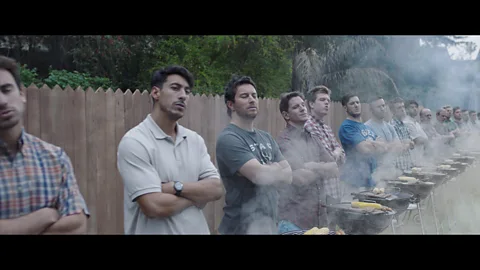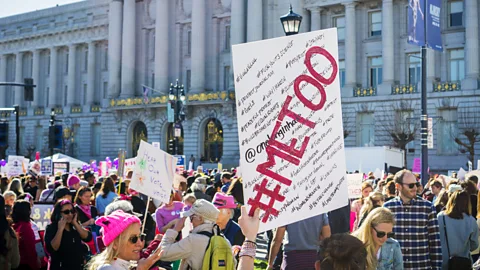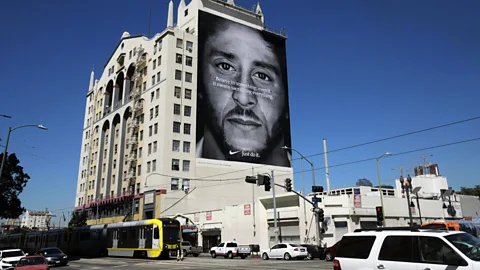How socially-charged adverts could become the norm
 Procter & Gamble
Procter & GambleGillette’s new ad tapped into the era-defining #MeToo movement, but was met with backlash online. Here’s why you can expect similarly provocative ads in the future.
Although it was an American advertisement, razor brand Gillette’s new 90-second video has made waves around the world. It’s likely you’ve seen it, too – maybe even shared it. The #MeToo-inspired ad, entitled ‘We Believe’, tackles attitudes of ‘toxic masculinity’. It not only brings Gillette’s ‘The Best a Man Can Get’ slogan into wildly different territory, but also takes aim at some of the company’s own consumers.
The ad was always intended to be much more than a video, a company spokesman told the Wall Street Journal on Thursday: it is a “commitment to spark and contribute to positive change through our voice as an advertiser and our actions as a brand and a company”.
'We Believe' has attracted both praise for its social responsibility and nearly equal backlash over its accusatory messaging. In other words: it’s about as divisive as it gets.
That just might be the point.
 Procter & Gamble
Procter & GambleUnlike many of their past campaigns, major American advertisers seem to be increasingly embracing controversy as a branding strategy. Before Gillette, Nike’s September 2018 campaign with former San Francisco 49ers quarterback Colin Kaepernick invoked the Black Lives Matter movement. Pepsi also invoked Black Lives Matter in a 2017 ad featuring Kendall Jenner (which the company ended up pulling within 24 hours over criticism that the spot made light of the movement). Coca-Cola’s 2014 ‘It’s Beautiful’ ad, which ran during a much-watched Super Bowl commercial block, carried a strong pro-immigrant point of view.
It’s (probably) just the beginning
Brace your Twitter feed, because corporations taking up the mantle of divisive social issues in the name of branding likely won’t temper soon, says Claudia Kubowicz Malhotra, a clinical associate professor of marketing at the University of North Carolina-Chapel Hill.
“We’re at the very beginning of a curve or uptick in this type of advertising. There probably will be a period where it feels overcrowded, but I don’t see that any time in the foreseeable future,” she says. “People don’t watch advertising as much as they used to, so you need to say or do something that catches people’s attention. Then, the whole social media aspect of amplifying that is also very critical.”
She points out that Gillette’s use of the hashtag #MeToo signalled that the company specifically wanted to continue the conversation online.
Rupert Younger, director of the Oxford University Centre for Corporate Reputation at Saïd Business School, believes these kinds of ads could become the norm. “Studies show that young people entering the workforce are more demanding around commitments to social purpose when choosing employers. Companies like Patagonia, which are authentic in how they consider their social purpose, have much to gain,” he says.
 Alamy
AlamyA 2018 study from the publicity firm Edelman showed that two-thirds of global consumers make purchases that align with their values, up 13% on average from the year before (20% in the UK alone).
Younger says that as socially-tied messaging becomes more common, brands will try different tactics to reach consumers – some “relying on social media or other outward-facing strategies, and others focusing it more on internal communications and group-level statements and commitments.”
If these socially-tied adverts become the norm, will they stop being effective? We, after all, cannot get charged up about every message we see – it would simply be exhausting. Maybe even desensitising, much like “banner blindness”, the phenomenon of banner ads ‘disappearing’ into the background of websites, commanding little-to-no attention at all.
“Anything done too much is going to saturate. If you take any advertising technique – sex, celebrities – that’s used consistently for a long period of time, people tune it out,” says Ashesh Mukherjee, an associate professor of marketing at McGill University. The hot-button issues-driven format simply is not common enough for now; we’re not near oversaturation yet.
Malhotra agrees. “Just look at what Gillette has done – the proof is in the pudding. Look at what Nike did. Look at the reaction,” she says. “It would a have to be every brand talking about every tone of these issues, and we’re a long way to go from there.”
 Alamy
AlamyBut does it actually work?
The day “We Believe” debuted, shares of Gillette’s parent company Procter & Gamble jumped briefly on the New York Stock Exchange; as of this writing, it closed slightly lower after a few days of trading.
But Nike’s Kaepernick campaign drove its stock price to record highs (after an initial dip) and kept climbing for several consecutive days. Sales also reportedly grew 31% in the days after the endorsement deal.
“Everybody said, ‘Oh my gosh, that’s so risky’,” Malhotra says of the Nike campaign. “But we already know in a very short period of time that it was a very effective campaign… They took a position and it resonated with their target market.”
As more people support companies they believe in, these ads can move the needle if executed correctly. The same 2018 Edelman study also showed that brand communications drive consumer behaviour, with nearly a third of respondents saying that messaging about values is more effective than focusing on the products themselves.
Still, Mukherjee says brands who do this have to consider the risks of alienating their customers. The razor company serves many different segments of men, some of whom have taken Gillette’s ad strikingly direct dialogue as an indictment.
“I’m not sure if [for] Gillette, it’s going to help them,” he says. “Will this dilute their brand image, are they seeking to reposition the brand completely?” He says brands have to choose wisely: the bigger the company and the wider its reach, the more it may have more to lose. “They need to think about whether they are mass market or niche. If they’re mass market, they need to think twice.”
Consumerism with a side of ethics
Regardless of whether these socially-charged messages infuriate, inspire or cause you indifference, they are still adverts. And it is important to acknowledge the customer’s role in consuming both the message of the ad as well as the product it is selling. Companies are far from charities; they scheme all advertisements to drive engagement, brand awareness and, ultimately, sales.
There is quite a bit of calculus in a brand like Gillette’s risk. “It’s a bit like politics… it’s fine that you drive certain people away as long as the people who remain are large enough in number and become even more strongly committed to your brand,” says Mukherjee.
When consumers engage with an ad that takes a stand, it raises the profile of the company – often with little work on the company’s part at all.
Think about it like a CEO, says Malhotra. “It’s going to cost me a lot of money to air [an ad]. I don’t want to air it that frequently because of the expenses. How can I air it a few times, make a statement, and get people to start passing along the message on social media?”
“I never saw the Gillette on TV,” she adds. You probably didn’t, either.
Maybe that makes consumers pawns in a new era of advertising. But, if these messages change the way you shop so that you’re making decisions based on your own ethics, perhaps everyone is a winner.
--
If you liked this story, sign up for the weekly bbc.com features newsletter called "If You Only Read 6 Things This Week". A handpicked selection of stories from BBC Future, Culture, Capital and Travel, delivered to your inbox every Friday.
{"image":{"pid":""}}
